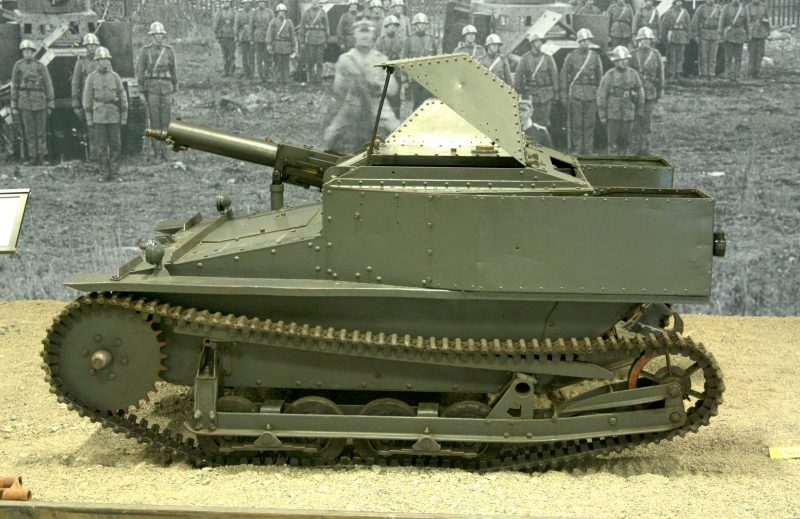Although the Carden Loyd Carrier would eventually find its way onto the battlefields of Europe during the Second World War, it began many years earlier, in the garage of Major Giffard LeQuesne Martel. He was a military engineer and an expert in tank strategy for the British Army, and this particular invention was a pet project of his.
He build the first prototype from a variety of materials and spare parts, with the intention of creating a tank that could be driven and operated by only one man. It was a novel idea, and when in the mid 20’s he presented it to the officials at the British War Office, it was fairly well received.
The concept became more widely publicized, as other manufacturers began designing and producing their own versions of the one man tank. In the end, it was a company called Carden-Loyd Tractors that managed to gain a firm grip on the market.
Not content with just the one man tanks, the designs of which contained a number of flaws and drawbacks, they also began manufacturing two man vehicles. In the end, these actually became far more popular than Martel’s original concept, and were successfully marketed internationally.
This model, designed by Captain Vivian Loyd and Sir John Carden, is the vehicle we know today as the Carden Loyd Carrier. It was designed to be a two man, low-cost Machine-Gun Carrier, for use by infantry in a range of environments and on a variety of terrains.
Vickers-Armstrong later took over the company in 1927, and this tank then became mass-produced for use in the British Army, as well as being made available for export. The infantry didn’t like this tank, however, and it was hugely unpopular, so they were mostly used by the Royal Tank Corps in reconnaissance roles as embryonic, light vehicles.
Production of the Carden-Loyd Carrier began in 1927 and ran through to 1935. The last two years of production (1933-1935) were taken on by the Royal Ordnance Factories. 450 of these were made in total. At least 325 of the Mark VI Tanks were utilized by the British Army, mainly in the role of machine-gun carrier but also used as mortar carriers, smoke projector vehicles, and light gun tractors.
From 1930 to 1931, the Canadian Amy received 12 of these each year. Following an evaluation, carried out by Princess Patricia’s Canadian Light Infantry and the Royal Canadian Regiment, they were used in a training role by the Canadian Army at their Canadian Armored Fighting Vehicle School while they awaited larger and newer tanks. In 1938 they were eventually provided with the Vickers VI B light tank. The Canadians never used these in a combat role.
The Carden-Loyd Tankette inspired the design of the German Panzer I tank; this came about from cooperation between German and Soviet Union military cooperation.
There were a number of flaws in the design of the Carden Loyd Carrier, however, that only became evident as time went on and they were put to use. The suspension design caused intense motion sickness, severe fatigue and headaches in anyone who drove one for more than 10 minutes.
Then, when tested in Belgium by the Chasseurs Ardennais Mountain Division, the tanks were actually classed as almost useless in mountainous areas and were consequently passed over to a border guard regiment.
These were still in use up until May 1940 when the Battle of Belgium began, from which point on they were positioned on the banks of the Meuse. They have been found to have fired rounds on the morning of May 10th, 1940 – the day the German invasion began.
This video is the second in a series that covers some of The Tank Museum’s collection of vehicles. It is presented by David Fletcher MBE (historian of The Tank Museum), and offers a fascinating insight into one of the more obscure chapters in the history of tank development and warfare.
